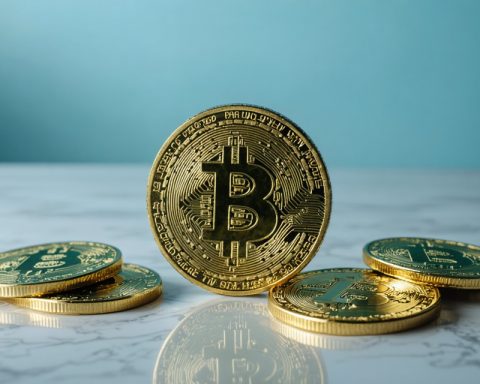Stock Update and Analyst Insights
Indie Semiconductor, Inc. (NASDAQ: INDI) started Friday on a downward trend, with its stock opening at $4.23 after closing the previous day at $4.36. The day’s trading volume reached 653,122 shares.
A variety of analysts have recently assessed Indie Semiconductor’s performance. UBS Group began coverage with a neutral stance and a price target of $4.50. Conversely, Benchmark revised its price target downward, dropping from $12.00 to $9.00 while maintaining a buy recommendation. Similarly, Roth MKM adjusted their forecast for the stock from $7.00 to $5.00, issuing a buy rating.
The average rating among analysts is classified as a Moderate Buy, with a collective target price of $8.29. Presently, Indie Semiconductor boasts a market cap of approximately $875 million.
On November 7, the company reported a quarterly earnings loss of $0.21 per share, falling short of expectations of $0.09. Despite this, the revenue for the quarter reached $53.97 million, slightly above forecasts. Insiders have also engaged in significant selling, with COO Michael Wittmann and CEO Donald McClymont offloading substantial shares recently.
With ongoing fluctuations, investors remain watchful of Indie Semiconductor’s performance amidst changing analyst ratings.
The Broader Implications of Indie Semiconductor’s Market Movements
As the tech landscape evolves, the performance of companies like Indie Semiconductor, Inc. resonates far beyond mere stock prices. Their trajectory not only impacts market sentiment but also reflects deeper undercurrents affecting society and the global economy. The demand for innovative semiconductor solutions is growing, especially in the realms of electric vehicles and IoT devices, where efficiency and smart technology are increasingly paramount. The success or faltering of such companies could reshape consumer access to technology, influencing daily life and economic opportunities across various demographics.
Additionally, the fluctuating stock prices of companies like Indie Semiconductor could signal a shifting narrative in investment trends towards tech sustainability. As investors analyze the potential for long-term growth, there is a heightened focus on companies that prioritize sustainable practices and eco-friendly product development. Such trends not only impact financial markets but also align with broader societal movements towards environmental responsibility.
Considering future trends, the market’s cautious optimism surrounding semiconductor companies indicates a possible consolidation phase in the tech sector. This could lead to innovations that promote resilience against supply chain disruptions, a lesson learned from the ongoing global semiconductor shortages. Long-term, the intertwining of technology advancement and environmental stewardship may redefine market priorities, shaping emerging sectors that promise economic and ecological stability.
Is Indie Semiconductor a Wise Investment? Latest Insights and Market Analysis
Stock Update and Analyst Insights
Indie Semiconductor, Inc. (NASDAQ: INDI) has been an interesting stock to watch recently. On a recent Friday, the stock opened at $4.23, down from the previous day’s close of $4.36, with a trading volume of 653,122 shares. Amidst fluctuating prices and varied analyst opinions, let’s dive deeper into the current landscape for Indie Semiconductor.
Analyst Ratings Overview
The assessment from financial analysts reflects a cautious outlook on Indie Semiconductor’s stock performance. Notably, UBS Group initiated coverage with a neutral stance and a price target set at $4.50. In contrast, Benchmark has revised their price target downwards from $12.00 to $9.00 but still recommends the stock as a buy. Roth MKM has adjusted its forecast, lowering the target from $7.00 to $5.00, also maintaining a buy rating.
The average analyst rating for Indie Semiconductor currently stands as a Moderate Buy, with a consensus target price of $8.29. The company’s market capitalization is approximately $875 million, positioning it within a competitive segment of the semiconductor industry.
Financial Performance
On November 7, Indie Semiconductor disclosed a quarterly earnings loss of $0.21 per share, which starkly contrasts with analyst expectations of a loss of only $0.09 per share. However, it is noteworthy that the company’s quarterly revenue reached $53.97 million, which slightly exceeded predictions, showcasing some resilience despite the shortfall in earnings.
Insider Activity
Another point of interest is the recent insider trading activity at Indie Semiconductor. Both COO Michael Wittmann and CEO Donald McClymont have sold substantial amounts of their shares, which could signal varying levels of confidence in near-term stock performance.
Market Trends and Predictions
The semiconductor industry as a whole is under pressure due to shifts in supply chain dynamics and fluctuating demand across various technology sectors. As industries evolve, particularly in automotive and consumer electronics, the demand for semiconductor solutions is anticipated to rise. This context could favor companies like Indie Semiconductor if they can align their strategies to meet new market needs effectively.
Pros and Cons of Investing in Indie Semiconductor
Pros:
– Resilient Revenue Growth: Despite losses, revenue exceeded forecasts.
– Analyst Recommendations: Some analysts maintain ‘buy’ ratings, indicating potential for recovery.
– Innovative Sector: As a player in the semiconductor market, Indie is well-positioned for growth with increased demand in technology.
Cons:
– Earnings Shortfall: Recent earnings projections were disappointing.
– Insider Selling: Significant sell-offs by leadership might raise concerns for potential investors.
– Competitive Market: The semiconductor industry is highly competitive, with many players vying for market share.
Final Thoughts
Investors in Indie Semiconductor need to weigh the recent earnings disappointments against analyst forecasts and market potential. With an average analyst target price of $8.29, there is room for optimism if the company can navigate its challenges and leverage industry trends.
For more updates on stock performance and insights into the semiconductor industry, visit SEC for regulatory filings and market trends.










